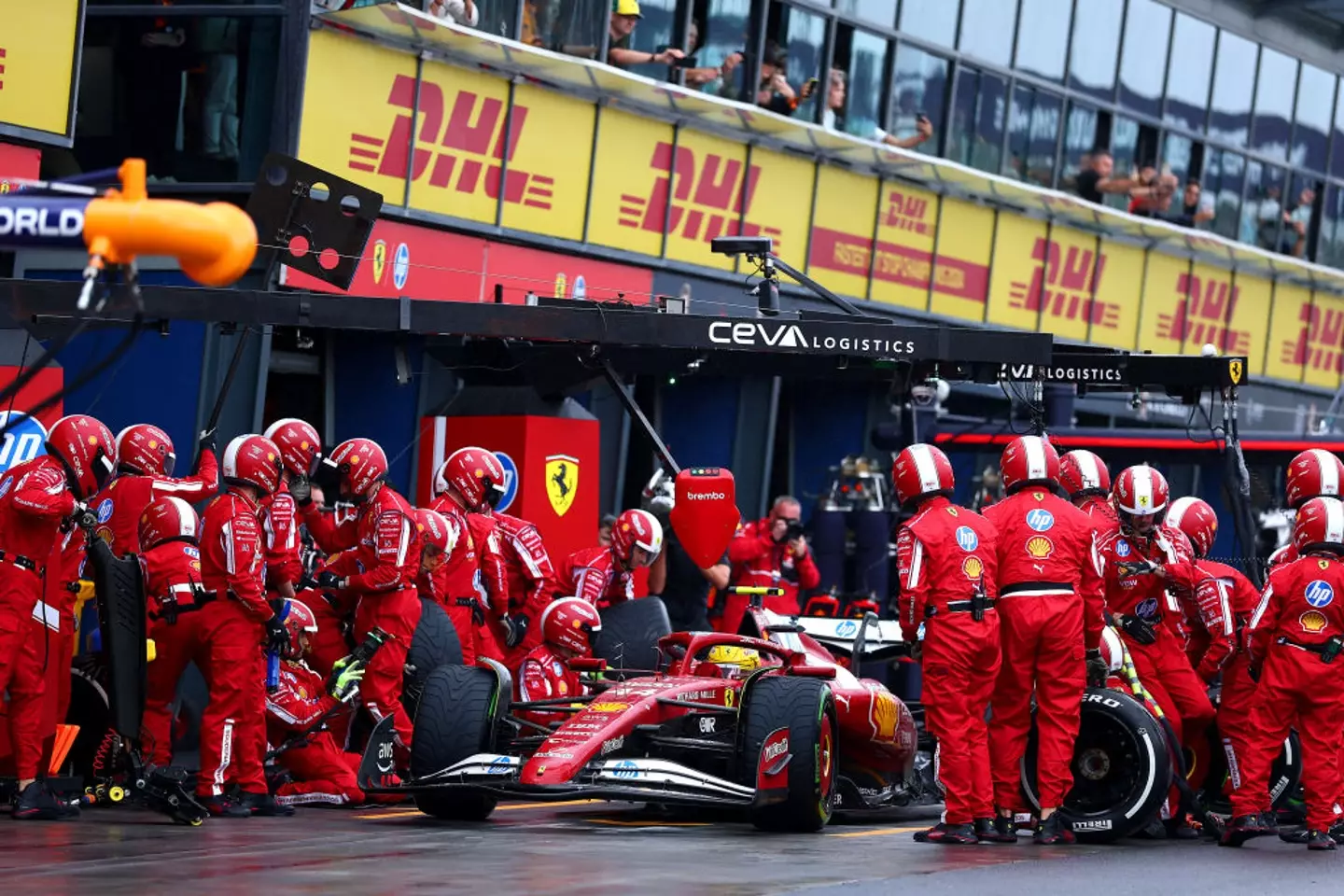
Ferrari’s strategic misjudgment: a case study in pit stop decision failures
The 2025 Australian Grand Prix at Melbourne's Albert Park Circuit was a race of shifting conditions that put teams' strategic decision-making to the test. As rain showers returned mid-race, pit crews scrambled to make the right call on tyre changes. McLaren and Mercedes adapted swiftly, while Ferrari's hesitation in the pit lane ultimately cost them a competitive finish. What should have been a potential podium fight for Charles Leclerc and Lewis Hamilton turned into an underwhelming P8 and P10 finish.
Ferrari's delayed response to worsening conditions, coupled with a poorly executed double-stack pit stop, exemplified how an otherwise promising race unraveled due to flawed decision-making. This report provides a data-driven breakdown of what went wrong and the repercussions of Ferrari's miscalculations.
The weather shift: recognizing the critical moment
Leading up to Lap 45, the race was progressing in semi-dry conditions, with both Ferrari cars running on hard (H) tyres. However, rain had already begun to intensify on Lap 44, prompting teams to reassess their strategies. By Lap 45, it was evident from on-track data that conditions were no longer suitable for dry tyres. The likes of Lando Norris (McLaren), George Russell (Mercedes), and Andrea Kimi Antonelli (Mercedes) made the switch to intermediate (I) tyres at the right moment, gaining a crucial advantage over competitors who stayed out on slicks.
Despite clear signs that grip levels were dropping and lap times on hard tyres were deteriorating, Ferrari elected to stay out an additional two laps on the hard compound. This decision proved disastrous, as telemetry data illustrates a significant loss in pace for both Leclerc and Hamilton during Laps 45 and 46 compared to their rivals on intermediates.
Telemetry Breakdown (Lap 45 Analysis)
Examining the data comparison between Norris (fresh intermediates) and Leclerc/Hamilton (hard tyres), we see:
-
Lower top speeds and slower acceleration out of corners for Ferrari due to a lack of traction.
-
Increased braking distances and lower apex speeds, causing further lap time losses.
-
More erratic throttle application, indicating the drivers were struggling to control power delivery.
-
Loss of around 3 seconds per sector, relative to cars that had already switched to intermediates.
At this stage, the strategic window for Ferrari to pit and minimize damage had already closed. The failure to act swiftly meant that both drivers hemorrhaged crucial track position.
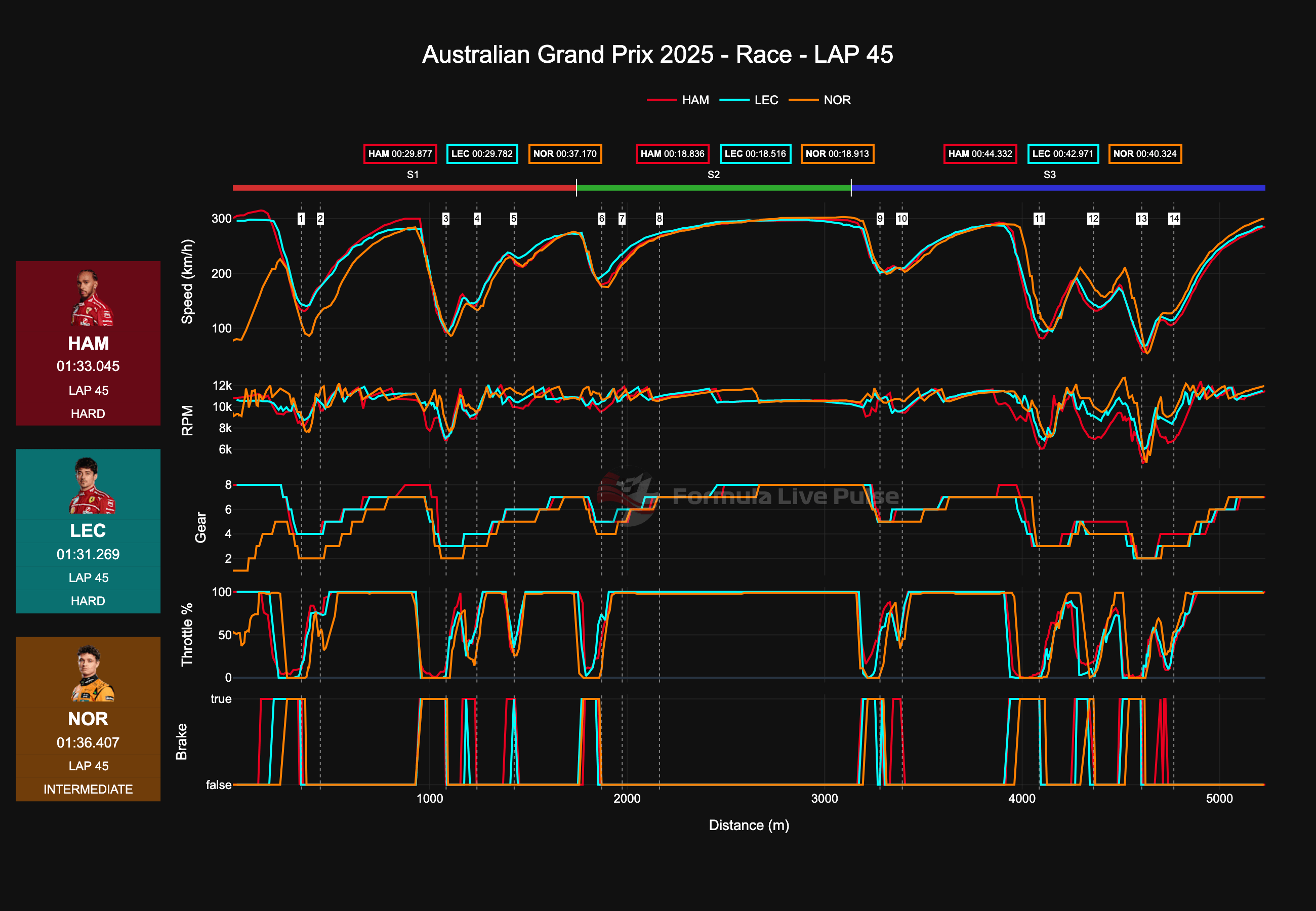 This first image shows both Ferrari's VS Norris on lap 45 (rain came one lap earlier). Although Norris' lap is slower (OUT LAP), it is clear from the second and final sector that the intermediate tires were the right choice.
This first image shows both Ferrari's VS Norris on lap 45 (rain came one lap earlier). Although Norris' lap is slower (OUT LAP), it is clear from the second and final sector that the intermediate tires were the right choice.
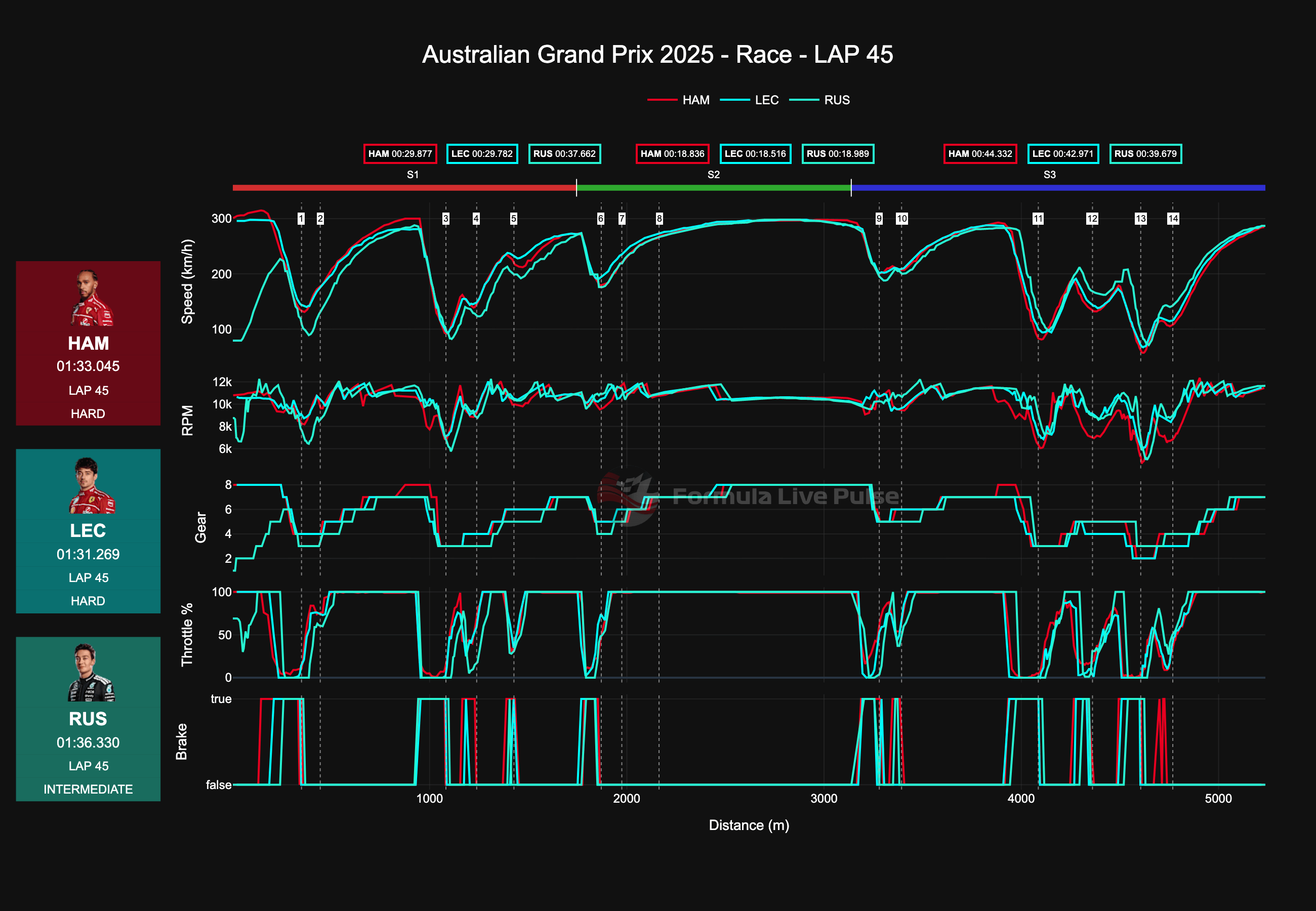 Russel's lap against both Ferrari's on lap 45 can be analyzed here. Russel stopped on lap 44, but his lap time is no better than either Ferrari's, probably due to the fact that the rain was not yet as intense in the first two sectors, or the Brit struggled to get the Intermediate tires up to temperature during his out lap. However, the third sector is shocking: a full 3 seconds gained to the two Ferraris.
Russel's lap against both Ferrari's on lap 45 can be analyzed here. Russel stopped on lap 44, but his lap time is no better than either Ferrari's, probably due to the fact that the rain was not yet as intense in the first two sectors, or the Brit struggled to get the Intermediate tires up to temperature during his out lap. However, the third sector is shocking: a full 3 seconds gained to the two Ferraris.
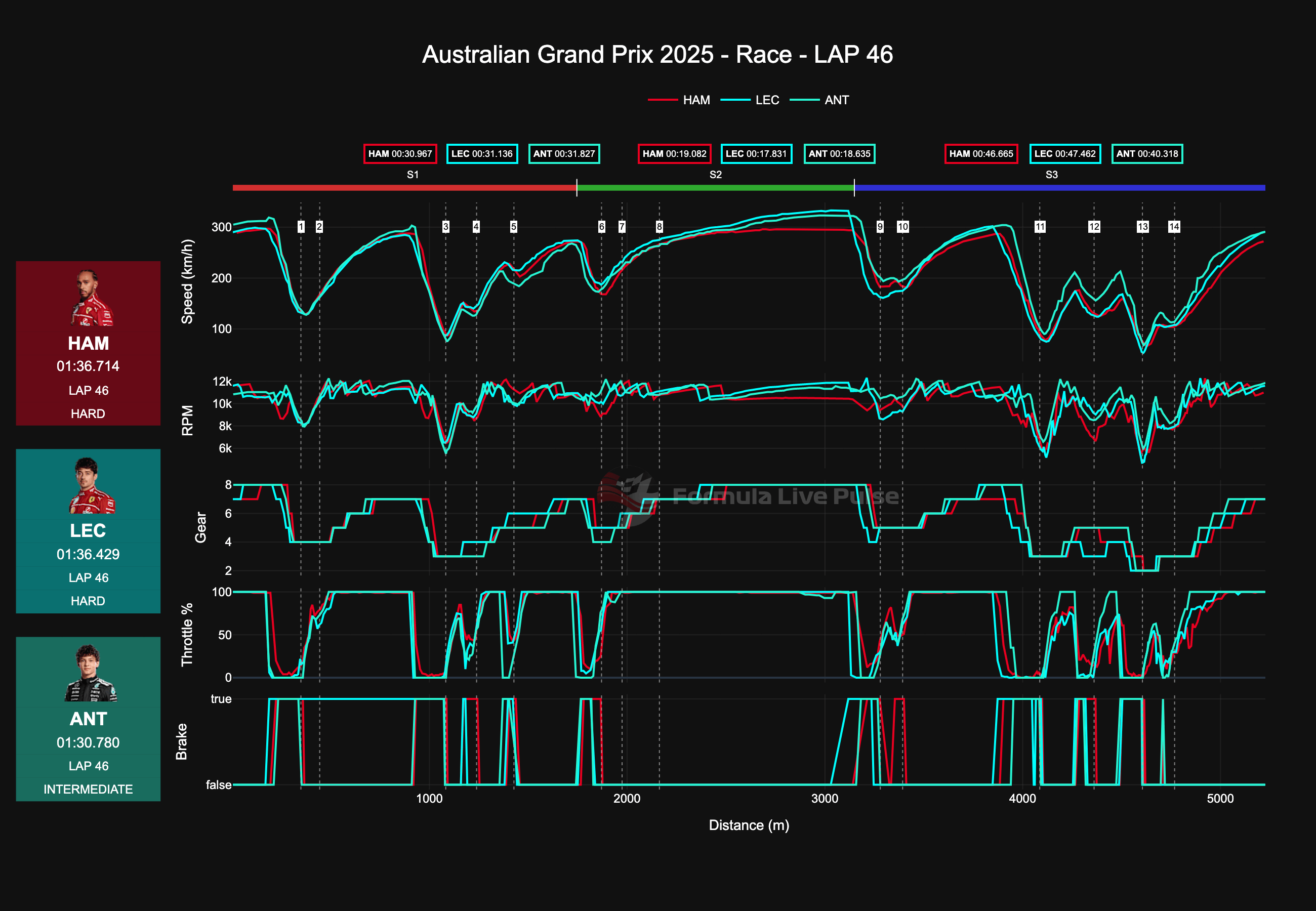 Lap 46 is clear evidence that rain had arrived everywhere on the circuit. The pit stop window is now lost for Ferrari. As this telemetry shows, Antonelli is a full 6 seconds faster than the Ferraris, who (remember) will not stop until lap 47.
Lap 46 is clear evidence that rain had arrived everywhere on the circuit. The pit stop window is now lost for Ferrari. As this telemetry shows, Antonelli is a full 6 seconds faster than the Ferraris, who (remember) will not stop until lap 47.
The Pit Stop Execution: A Costly Double Stack
When Ferrari finally decided to pit on Lap 47, the situation was already suboptimal. However, their execution of a double-stack pit stop made matters worse.
Double Stack Pit Stop Breakdown
Ferrari brought both cars in sequentially, servicing Hamilton first, followed by Leclerc. While double-stacking can be an effective strategy in cases where a team can execute it quickly, Ferrari's approach backfired:
-
Lewis Hamilton's pit stop was efficient (2.4s), wth a total pit lane time of 20.802s.
-
However, Charles Leclerc had to wait for Hamilton to move away, leading to a 3.2s pit stop and a longer pit lane time of 24.528s.
| HAM | LEC |
|---|---|
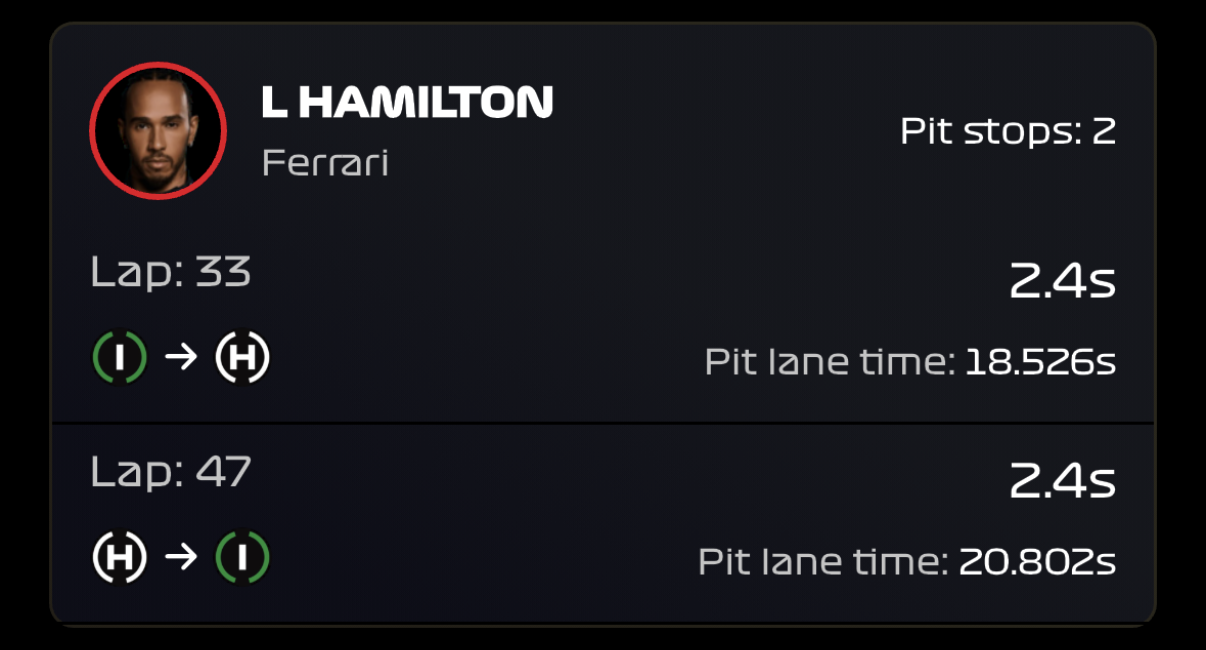 | 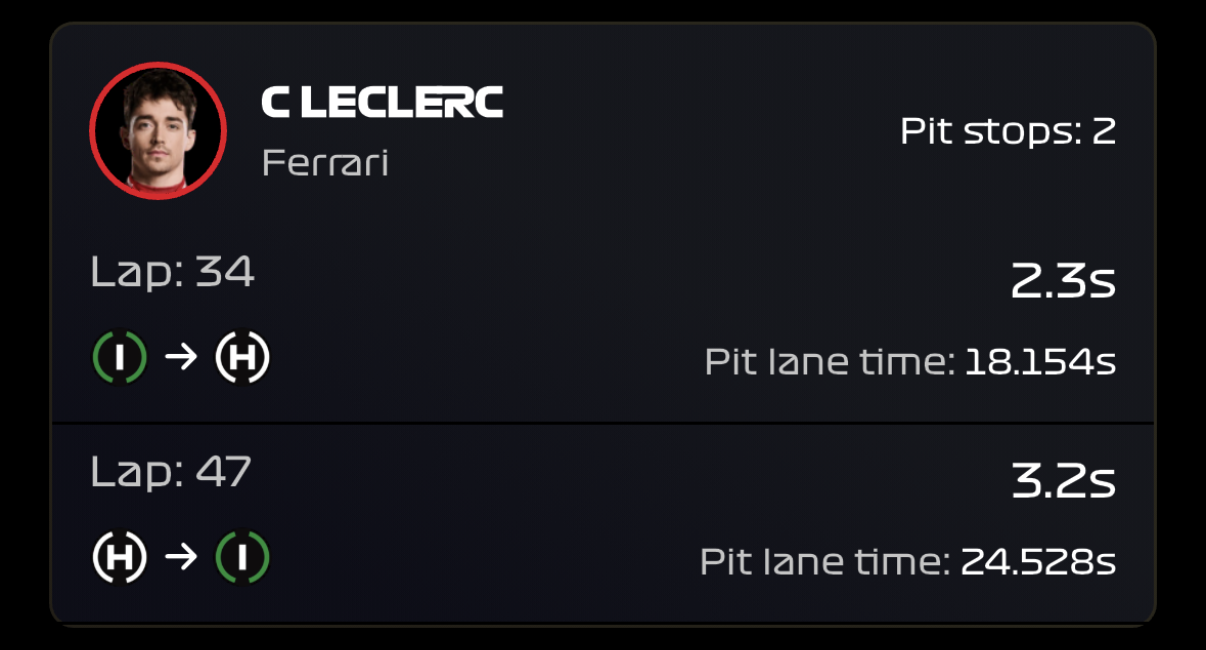 |
This extra delay compounded Ferrari's already compromised track position, dropping Leclerc behind several cars and into traffic. By the time he rejoined the race, the advantage of switching to intermediates was significantly reduced compared to those who had pitted earlier.
Comparison to Competitors: How Ferrari Lost the Race
By analyzing the performance of their rivals, we can quantify Ferrari's strategic missteps.
-
McLaren (Norris) -- The British driver pitted for intermediates on Lap 45, gaining time and securing strong finishing positions.
-
Mercedes (Russell, Antonelli) -- Both pitted early and were able to maximize grip advantage.
-
Red Bull (Verstappen) -- Also pitted at the optimal time, ensuring he didn't lose crucial track position and securing his second place.
Ferrari's delayed response and inefficient pit execution meant that, even though both cars were strong contenders in the dry, their late transition to intermediates left them battling midfield runners instead of fighting for a podium.
Final Result: The Cost of Poor Strategy
After rejoining the race, Hamilton and Leclerc found themselves out of sync with the optimal race strategy. Their final positions tell the full story:
-
Charles Leclerc -- P8
-
Lewis Hamilton -- P10
A race that could have yielded a top-five finish, if not a podium, turned into a salvage operation due to indecisiveness and flawed execution.
Conclusion: Lessons Ferrari Must Learn
The 2025 Australian Grand Prix showcased the consequences of strategic inertia in Formula 1. In a race where conditions were evolving rapidly, Ferrari's failure to respond proactively not only cost them valuable positions but also exposed operational inefficiencies in executing pit stops.
To remain competitive, Ferrari must:
1. Improve real-time decision-making by acting proactively based on telemetry rather than reacting too late.
2. Refine pit stop strategies, ensuring that double stacks are executed efficiently without compromising the second driver.
3. Enhance intra-race communication, allowing drivers to relay track conditions effectively and challenge poor strategy calls.
With the season still in its early stages, Ferrari has time to rectify these weaknesses. However, if they wish to contend for a championship, they cannot afford another race lost due to strategic hesitation and poor execution.
Additional Sources & Media Coverage
This race will serve as an important lesson for Ferrari---one they cannot afford to repeat if they wish to stay in the championship fight.
